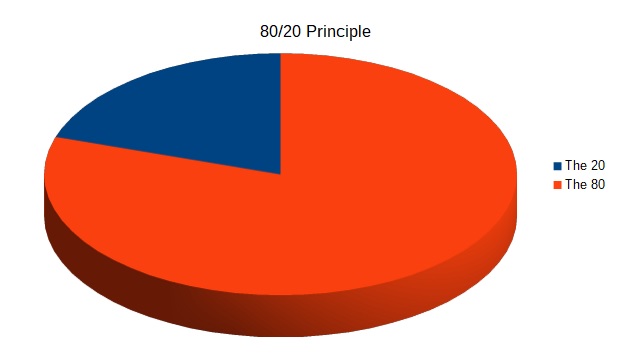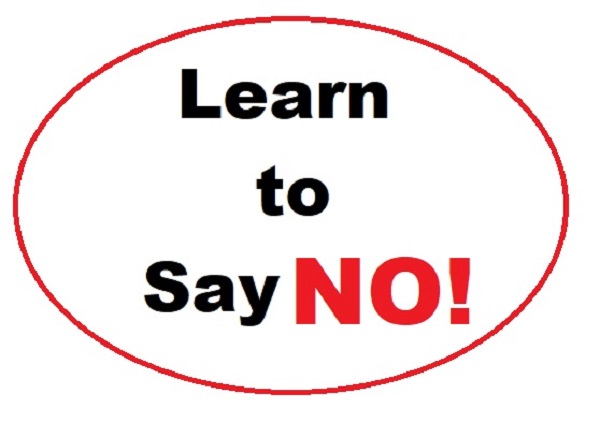If you’ve ever had an economics class, you might have heard of the Pareto Principle or the 80/20 rule. It’s commonly used to describe how twenty percent of an activity, situation, or economy rules or creates the other eighty percent. Of course, that’s a simplified version, but the idea can be applied to nearly any situation, including productivity.
Yes, you can apply the Pareto Principle to your work and personal life to accomplish more. Plus, you get more done by doing less work.
Origin of the Pareto Principle
Vilfredo Pareto noticed in 1906 that 20 percent of Italy’s population owned 80 percent of the land. This led him to noticing the same 80/20 ratio played out naturally in many situations. Dr. Joseph Juran was the one responsible for calling this phenomenon the Pareto Principle.
It’s since been applied to business, economics, productivity, and more. At its core, it’s about separating what’s most important and impactful from what’s still important but far less impactful.
Spend Your 20 on What’s Most Important
While most people see the Pareto Principle as the 80/20 rule, others call it the 96-minute rule. Why? That’s exactly 20 percent of the average eight-hour work day.

To increase your productivity based upon this rule, you’ll want to devote 20 percent of your day to your most important task(s). For example, if you’re working from home, you probably have a to-do list of what you need to accomplish during the day. Block out 20 percent of your entire work day to the tasks that yield the most results.
This may mean putting the most effort into your highest-paying client. Or, focusing on the most critical component of your job. For instance, if you’re a marketer, you could spend this portion of your day analyzing trends to determine where best to reach your target audience since knowing more about your audience is critical to ensuring your marketing is effective.
Determine Which Tasks Yield the Most Results
That leads to the next point. Determine which tasks yield the most results. You’ll want to measure these based on personal and professional results.

For example, if you focus on your hardest task first, you’ll save yourself the dread and procrastination that comes from thinking about it all day until you finally make yourself do it. This also hurts your productivity for every other task.
Go through your task list and cross out things that aren’t actually necessary. Then, arrange your tasks according to which ones help you the most. This could be financially or mentally. Eliminating the dread and anxiety of frustrating, but critical tasks leads to higher productivity the rest of the day.
Say No to What’s Holding You Back
According to the Pareto Principle, 20 percent of your efforts yield 80 percent of the results. You don’t want to spend 80 percent of your time on things that are just holding your back. I’ll use myself as an example.

As a freelance writer, you often start at the bottom. But, you can easily get trapped there. You also have to make sure you have a variety of clients to support yourself in the event a client decides to cut ties, which will happen often unexpectedly for a variety of reasons.
I could have tried to take on two dozen lower-paying clients to ensure I had more clients. However, I sat down and looked at my client list. I had five that paid nearly twice as much as the others. Yet, I spent just as much time on the lower-paying clients as I did the higher paying five.
I made the choice to focus my efforts on those five. This gave me more time to provide better work for those clients. I also had more time to take on additional work from them and even upsell additional services, such as editing and updating their older content.
Suddenly, I was making far more but only working with five clients versus 29. Saying no gave me freedom, an increase in income, and helped me be more productive because I wasn’t burned out working on what was holding me back.
Get the 80 Done Faster
A common misconception with the Pareto Principle is you don’t have to do the 80 percent. That’s not true. Usually, putting your effort into the 20 percent helps reduce the workload that comes with the 80 percent. But, most importantly, it makes the 80 percent easier to do.
If you spend less time on the 80 percent, you have more time for yourself and more time to take on tasks that earn you more, lead to a promotion, or just make you enjoy your job more.
For more productivity tips, you may want to check out this list of the best productivity books.


